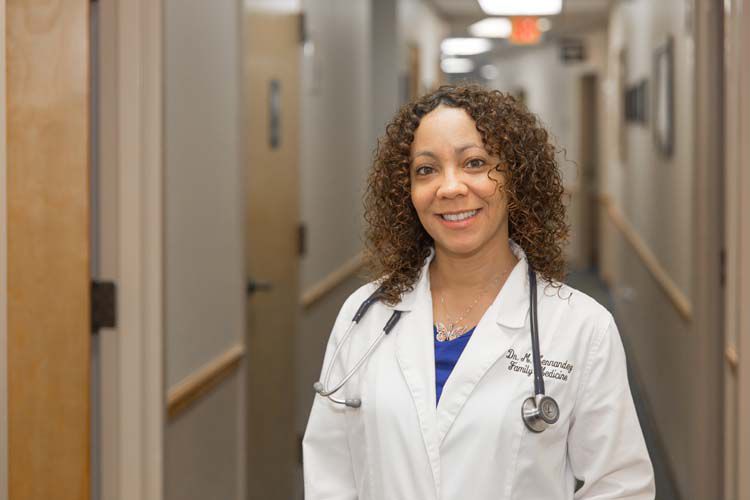
The healthcare system in this country is – hands down – the most expensive in the world, yet it also ranks at the very bottom in terms of health outcomes among 19 developed countries recently studied by the U.S. National Library of Medicine.
The National Institutes of Health says it knows why. “One of the most important reasons,” according to NIH, “appears to be our failure to emphasize primary care.” In fact, NIH goes on to say, “Countries that do focus on primary care have better health at lower costs.”
So when a bright, eager primary care physician like Dr. Miciara Hernandez-Perez opens a family care practice here it should probably be considered good news.
That’s especially true given that Florida currently has 42 percent fewer primary care providers than it needs according to an April article on the Dow Jones & Company’s MarketWatch.com.
Why are there so few primary care doctors these days?
MarketWatch points to the money. Beginning salaries for primary care physicians in this country are less than half of what a rookie specialist such as an orthopedic or general surgeon gets paid.
Merritt Hawkins, a nationwide physician-recruiting firm, reports that a beginning orthopedic surgeon can expect to be paid $488,000 annually while a primary care doctor can look forward to roughly $188,000: A difference of more than a quarter of a million dollars a year.
Not surprisingly, the lower pay, longer days, lesser prestige and added administrative headaches faced by primary care physicians have led today’s medical students to turn away in droves from family medicine and concentrate instead on more lucrative specialty fields.
In September of this year the New England Journal of Medicine published a report from the Annals of Internal Medicine saying, “For every hour spent with patients, [primary care] physicians spend two hours on electronic health records and desk work.”
Dr. Stephen Schimpff, a former CEO of the University of Maryland Medical Center, adds that simply processing paperwork for insurance companies and Medicare costs primary care doctors an average of $58 for every patient they see.
That, Schimpff says, is forcing many of these frontline care providers to increase the number of patients they see while often having to decrease the amount of time they can spend with those patients in order to help offset their expenses – including student loan repayments as well as operating and staffing costs.
Compounding matters further for the future, the Association of American Medical Colleges says that in just eight years, the nationwide shortfall of primary care physicians will soar to well over 45,000.
Still, after three years of family practice in Alabama, Hernandez-Perez has joined the Sebastian River Medical Group and is clearly eager to roll up her sleeves and start meeting new patients here on the Treasure Coast.
“I like to be part of my patients’ lives,” says Hernandez-Perez, “and get to know both the patients and their families. That’s what I like about primary care.”
The Cuban-born Hernandez-Perez continues by adding, “I hope to build my practice and have patients for 15 or 20 years. I hope to become the doctor for my patients’ kids, too.”
That’s something of an anomaly in the current healthcare scene. Nevertheless, the Marcus Welbys of today remain most patients’ first line of health defense.
The American Academy of Family Physicians points out that primary care doctors are charged with, ”disease prevention, health maintenance, counseling, patient education as well as the diagnosis and treatment of acute and chronic illnesses in a variety of healthcare settings including in their offices, inpatient care, critical care, long-term care and home care.”
Moreover, it is usually a primary care physician who refers patients to those much better-paid specialists and surgeons.
While the ever-optimistic Hernandez-Perez admits that technologically impressive gadgets, gizmos and gear are constantly introduced for assorted specialists, the tried and true “sphygmomanometer” or blood pressure reading device – invented in 1881 – might well be one of the newer pieces of equipment being produced for primary care physicians.
Product developers follow the money and it’s clear that the big bucks aren’t in primary care.
But Hernandez-Perez doesn’t seem to mind.
“I never get bored with family medicine,” she says with a smile, “because you treat everything” as a primary care physician.
Dr. Miciara Hernandez-Perez is with the Sebastian River Medical Group. Her office is at 13840 U.S. Highway One in Sebastian. The phone number is 772-581-0334.



